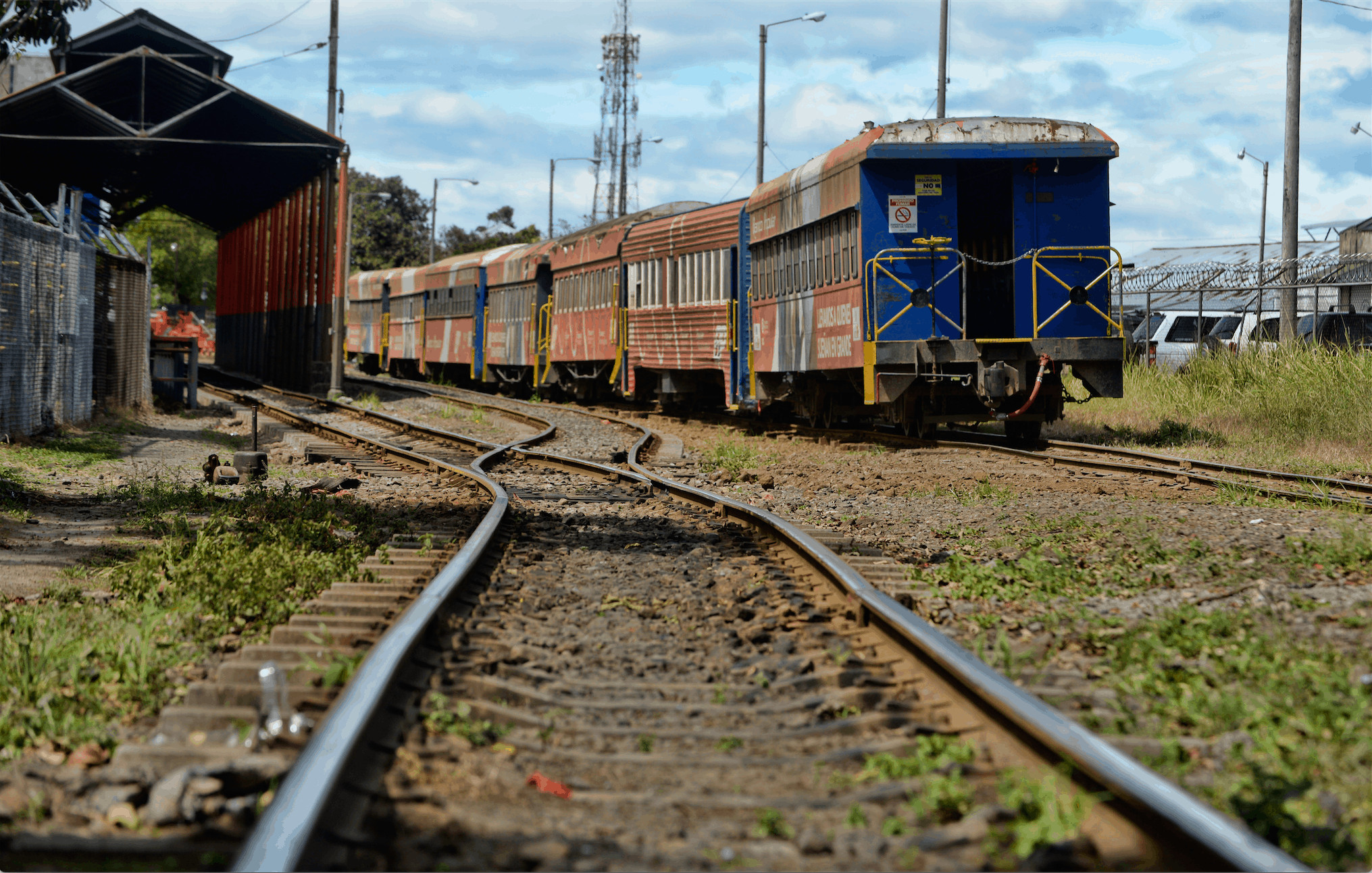THE railroad runs through the middle of the town, but trains rarely pass through. The once-lively station that farmers, merchants and passengers crowded around is quiet now, and the stands where food and drink vendors did a brisk business with each train are gone, except for the bases embedded in the cement. But the station building, freshly painted in yellow and green – its original colors – has a new lease on life, because the people of Río Grande de Atenas, a coffee town northwest of San José, have made it into a museum.
This was the station for Atenas (about six kilometers farther west), and was the only means of transportation and shipping to the coast or San José. From 1898, when the steam locomotive Maria Cecilia pulled the first train along this route, until 1994, when freight service was discontinued, the train was a daily sight. But trucks and buses make the trip faster and cheaper, and the station, unused, began to fall apart. What the weather didn’t damage, vandals did.
IN 1998, Juan Ramón Arguedas, a former worker on the line who lives just across the tracks from the station, got a group together to see if they could restore the building and collect memorabilia, not just of trains, but of local history.
The Costa Rican Railroad Institute (INCOFER), which owns the railroads, agreed to let the group have the building and donated old railroad equipment for the museum: lanterns, switches, ticket punchers, signals and more. And the community emptied its closets and storerooms to donate photos and farm and household equipment.
One photo shows how the station looked back in the 1890s, when it included a cantina for a drink or two while waiting for the train. Back then, there were waiting rooms, a telegraph office and living quarters for the operator, who was on duty “round the clock.”
The original building was replaced in the 1930s by the present one, but the stone slab floors are the same. The cantina is now an outdoor patio, with a grotto dedicated to the Sacred Heart, patron saint of the railroad. The water tower for the steam locomotives no longer exists except for a circular stone base, but someday may be rebuilt, according to José Arguedas, Juan’s son, who serves as a guide.
Although not an official stop, a maintenance crew aboard a locomotive hauling flat cars full of equipment sometimes pulls into the station with whistles blowing and bells ringing. The train stops while the workers take a break at a little restaurant along the tracks.
THE museum has three rooms full of gadgets, from model trains to saddles and thrashers, but the biggest donation sits out on the track: a 1928 AEG locomotive, made in Berlin, Germany – a gift from INCOFER. Another curious donation is a rope used to haul bodies from the river in Costa Rica’s worst train accident, circa 1922 in Heredia, when a train full of excursionists fell from a bridge.
If the museum seems a jumble, it’s because it’s still in the accumulating and assembling stage. Missing are signs with explanations and aisles for walking through the exhibits. But all that will come, according to organizers.
On weekends, American Travel runs a passenger train from San José to Caldera with a stop at Río Grande de Atenas (see sidebar). The museum is open Saturdays and Sundays all day. During the week, ask at the little restaurant across the tracks or call the Rolando Villalobos family at 812-0750.
TO reach Río Grande, take the turnoff at the big curve on the La Garita-Atenas highway, about 4 kilometers north of Atenas. Follow the road another 4 km to the chicken-feed factory and turn right about two blocks. Buses from Atenas stop at the station.

